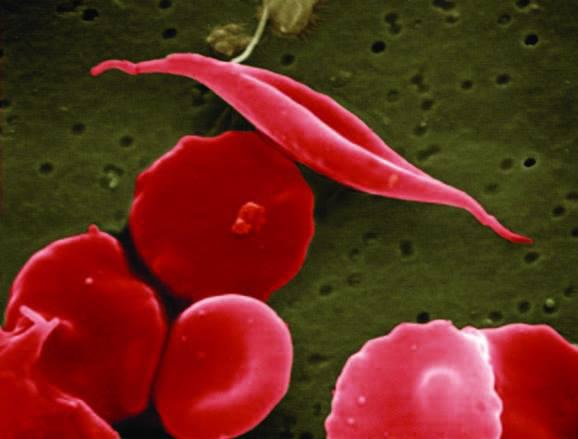Between increased competition for limited resources in research funding and medical conditions that have powerful and prominent champions, among other issues, it can be especially challenging for rarer conditions like Sickle Cell Disease to remain a focus of the public’s attention and, therefore, obtain the advances the many who suffer from it so profoundly need.
So, let’s discuss some key aspects of the inherited illness to underscore how important the battle for its eradication still is and hopefully clarify misperceptions along the way.
What is Sickle Cell Disease?
-
A genetic, inherited disorder that causes often debilitating pain, suffering and diminished life expectancy. There are a few types that vary in severity.
-
The problem rests in a mutated hemoglobin —the protein within red blood cells (RBCs) that carries oxygen for delivery to vital tissues. Oxygen feeds our organs so they can stay healthy and perform their respective jobs.
-
This Hemoglobin S (aka Sickle Hemoglobin) polymerizes on deoxygenation and rids the RBCs of their malleability. Translation: these malformed sickled cells are stiff and clump together so they occlude blood vessels. The result is organ damage.
-
The natural course of the illness involves a complex cascade of events intermingled with crises often triggered by stressors like infections.
-
The CDC estimates roughly 100,000 Americans are affected. (More statistics can be found at that blue link).
What are some of the symptoms and struggles patients experience?
-
Anemia is commonplace (and often substantial) given these faulty cells get readily destroyed, over consumed and don’t last as long as healthy RBCs.
-
By early childhood, patients develop a functional asplenia (or ineffective spleen) increasing their susceptibility to overwhelming infection by encapsulated bacteria (e.g. sepsis).
-
Vaso-occlusive Crises result from infarction and ischemia—in infants the hands and feet swell, in particular. Basically, adequate blood flow is halted wherever the obstruction takes place. Location in the body matters with respect to outcomes (e.g. strokes, acute chest syndrome, pulmonary infarcts with subsequent hypoxia, gallstones, bone pain, kidney damage).
How are patients with this disease managed?
Treatment is often required in emergency room and hospital settings. Access to experienced specialists and medical personnel familiar with the trajectory of this disease can create a barrier for patients.
-
Aggressive pain management and rehydration is essential.
-
Prophylactic antibiotics are a mainstay in an effort to stave off infection which can routinely catapult patients into a life-threatening crisis —hence, why vaccination for pneumococcus and the like is so important.
-
Frequent blood transfusions. Though the blood supply is well-tested for safety, recurrent transfusion can lead to issues like iron overload which also must be treated.
-
Because fetal hemoglobin has a higher oxygen carrying capacity, a disease-modifying drug like Hydroxyurea that increases its presence is used.
Is there a cure?
Allogeneic hematopoietic stem-cell transplantation is curative, but less than 18% of those with severe disease have sibling donors who are a match. This is also not without great risk, though those need to be weighed against how advanced the disease.
With the advent of certain vaccines, early detection through prenatal or newborn screening, precipitous referral to specialty centers and aggressive intervention, patients are doing better than in the past in terms of survival. But, more work needs to be done.
Last year, there was a swirl of media and public interest surrounding early success of a patient treated seemingly successfully with gene therapy. Because it is uncommon to hear about progress with this condition, the work published in the New England Journal of Medicine at the time got a much deserved spotlight. To learn more about it, read Did Gene Therapy Cure Sickle Cell Disease? To watch a video program dedicated to the topic and this advance, see here for my participation in a global discussion on Al Jazeera TV.




